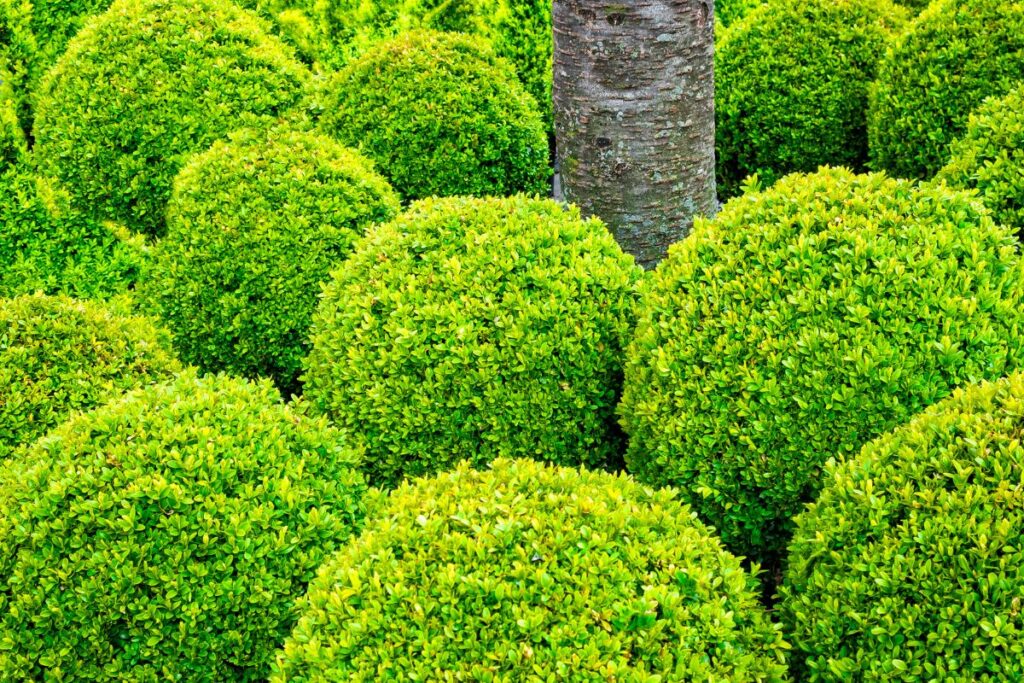Shrubs can really change how your Oklahoma yard looks and feels. They add greenery and can even help with privacy. But in our state’s climate, choosing the right shrubs is key. You wouldn’t want plants that can’t handle our weather or need too much care to thrive.
The good news is that many tough, good-looking shrubs do well in Oklahoma. You can find options that stay green all year, have nice flowers, or just make your yard look more put-together.
We’ve made a list of 10 shrubs that work great in Oklahoma, helping you pick plants that will look good and grow well in our local conditions.
Rose of Sharon
Rose of Sharon is prized for its annual growth rate, which can reach up to two feet every season on average, eventually filling in as a complete shrub. Because of its deer resistance, it’s a sensible choice for gardens where deer are frequently seen. This hardy plant is best suited for USDA Hardiness Zones 5 through 9, although it can grow in a variety of conditions and is a dependable low-maintenance landscaping choice in a variety of climates.
Crepe Myrtle
Typically planted in late fall or early winter, creeper myrtle grows best in USDA Hardiness Zones 7-9 due to their milder conditions. These trees, which are well-known for growing rather quickly, can develop quickly and reach their full height in a decent amount of time, providing visual appeal throughout the growing season. Plants with unique white blossoms that exhibit robust growth and durability, such as ‘Natchez,’ are highly prized by gardeners for their ability to quickly add texture and height to landscapes.
Mock Orange
Mock orange is frequently used because it resists disease and grows well in a variety of US Hardiness Zones, usually from 4 to 8. With a moderate growth rate, this shrub—scientifically named Philadelphus—is a good choice for gardeners looking to add a controlled element to their landscape. The fake orange’s robust appearance is often attributed to its spreading root system, which holds up its upright, arching branches.
Spirea
Because of their consistent resistance to disease, privet shrubs are a durable option for a variety of landscapes. Depending on the species, the leaf of these shrubs exhibits a striking change in color from green to shades of yellow, red, or even purplish. Spirea is typically planted in the early spring or fall to give the root system time to establish itself in temperate climates.
Red Twig Dogwood
Red twig dogwood has noticeable seasonal variations, enhancing garden interest with leaves that change to colors of red or purple in the fall. Because of its slow growth rate, it’s a good option for borders or hedges that won’t need continual care. Even though it is susceptible to some common plant diseases, it frequently exhibits resilience—especially with the right care. The vibrant red stems add brightness during the winter months and are especially noticeable in the winter.
Boxwood
Boxwood is easy to shape and maintain because of its modest growth rate and ability to survive in a variety of settings. Planting in late fall or early spring allows the shrub to become established before summer’s heat. Boxwood is a popular plant in many gardens because it is resistant to deer and rabbits, which makes it a dependable option in places with a lot of wildlife.
Hydrangeas
Famous for their stunning blooms, hydrangeas can change color depending on the pH of the soil; in alkaline soils, they will turn pink, and in acidic soils, blue. Hydrangeas grow at different rates, but they usually achieve maturity in a few years and cover gardens with large amounts of leaves and flowers. Well-known cultivars, such ‘Annabelle,’ with huge white blossoms, and ‘Limelight,’ featuring pale green flowers, are prized for their distinct features and versatility in many garden environments.
Nandina
The unusual shrub nandina is frequently planted because of its attractive growth rate; in mild regions, it can grow up to 7 feet tall. Its greatest growth occurs in US Hardiness Zones 6 through 9, demonstrating its tolerance for a variety of environmental factors. Because of its resistance to illnesses, gardeners searching for low-maintenance solutions can trust this plant. Well-known cultivars, such as “Firepower,” are renowned for their small stature and year-round vivid foliage.
Juniper
Because of its strong resilience to disease, juniper grows well from planting to maturity with little help. The majority of types grow slowly, which makes them ideal for regulated settings where conserving space is crucial. Although the tree can be found in many US Hardiness Zones, it is most commonly found in areas with fairly cool to cold temperatures. Because of its versatility, it is widely used in landscapes that call for hardy and low-maintenance plant solutions, particularly in areas with harsh environmental conditions.
Lilac
The lilac tree, a well-known sight in temperate regions, frequently bursts into fragrant clusters of purple, pink, or white blossoms in late spring. It can develop at a modest pace, and immature trees take time to fully blossom. Notable cultivars with consistent disease resistance and blue-violet blooms are “President Lincoln” and several similar varieties. Plant lilacs in US Hardiness Zones 3–7 for best results, as these zones provide the chilly temperatures necessary for bud formation.









